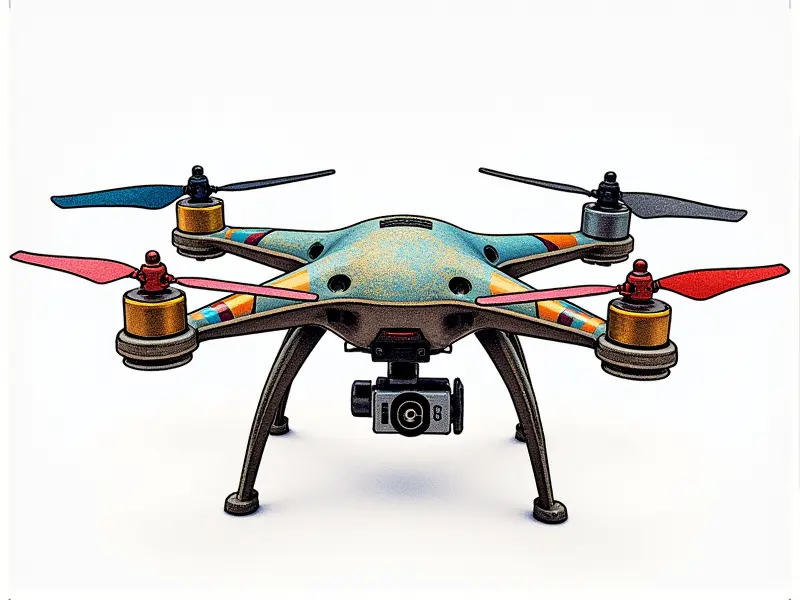Do NiMH batteries expire?

Are NiMH Batteries Good for RC Drones?
NiMH (Nickel-Metal Hydride) batteries are a popular choice among hobbyists and professionals using remote-controlled (RC) drones. They offer a balance between performance, cost, and environmental impact compared to other battery types. However, the question often arises: do NiMH batteries expire or degrade over time?
How Long Do NiMH Batteries Last?
NiMH batteries have a relatively long lifespan but are susceptible to degradation due to factors like age, usage patterns, and storage conditions. On average, NiMH batteries can last between 500 to 1000 charge cycles before their performance significantly declines.
Factors Affecting Battery Lifespan
- Usage Intensity: Frequent high-drain applications can shorten battery life.
- Storage Conditions: Extreme temperatures and humidity levels accelerate aging.
- Cycle Count: The number of charge-discharge cycles directly impacts longevity.
Tips to Extend NiMH Battery Life
To maximize the lifespan of your NiMH batteries, consider these maintenance tips:
- Avoid Overcharging: Use a smart charger that stops charging once full capacity is reached.
- Store Properly: Keep batteries in a cool, dry place away from direct sunlight and heat sources.
- Regular Maintenance Checks: Periodically test the battery's condition to catch issues early.
Comparing LiPo and NiMH Battery Lifespan
Lithium Polymer (LiPo) batteries are often favored for their high energy density, lightweight nature, and longer lifespan. However, NiMH batteries still have a place in RC applications due to their robustness and lower cost.
Advantages of LiPo Batteries
- Better Capacity: Can hold more charge per unit volume.
- Faster Charging: Typically charge faster than NiMH batteries.
Disadvantages of LiPo Batteries
- Safety Concerns: More prone to overheating and fire hazards if not handled properly.
- Hazards in Storage: Require special care during storage due to their volatile nature.
Signs Your NiMH Batteries Need Replacing
Several indicators suggest that your NiMH batteries are nearing the end of their life cycle:
- Decreased Capacity: Noticeable reduction in runtime between charges.
- Voltage Drop: Batteries fail to maintain consistent voltage levels during discharge.
- Inconsistent Performance: Charging times become unpredictable, and performance varies widely.
Best Practices for Storing NiMH Batteries
To ensure your NiMH batteries remain in optimal condition, follow these storage tips:
- Avoid Extreme Temperatures: Keep them away from direct sunlight and cold environments.
- Charge Before Storage: Store fully charged or at least 40% charged to prevent sulfation.
- Use Proper Cases: Protect batteries from physical damage with appropriate storage containers.
Maximizing Efficiency of NiMH Batteries
To get the most out of your NiMH batteries, consider these efficiency tips:
- Select Appropriate Capacity: Choose batteries that match the power requirements of your RC drone.
- Monitor Charging Cycles: Keep track of how many times you've charged and discharged each battery to estimate remaining lifespan.
When to Replace Your NiMH Batteries
The decision to replace NiMH batteries should be based on several factors, including performance degradation, safety concerns, and overall cost-effectiveness. If your batteries exhibit any of the following issues:
- Poor Performance: Regularly failing to meet expected runtime or power requirements.
- Safety Hazards: Exhibiting signs of overheating or physical damage that could compromise safety.
Testing the Health of Your NiMH Batteries
To assess the health and condition of your NiMH batteries, perform regular tests using a multimeter to check voltage levels and ensure consistency across all cells. Additionally:
- Cycle Testing: Charge-discharge cycles can help identify any significant changes in performance.
Common Issues with Old NiMH Batteries
As NiMH batteries age, they may encounter various issues that affect their functionality and safety:
- Voltage Depression: Cells lose voltage faster during discharge.
- Internal Resistance Increase: Higher resistance leads to reduced efficiency and heat generation.
Alternatives to NiMH Batteries for RCs
If you're looking for alternatives to NiMH batteries in your RC applications, consider these options:
- Lithium-Ion (Li-Ion): Similar to LiPo but with a different form factor and slightly better safety profile.
- NiCd Batteries: Offer lower self-discharge rates than NiMH but are less environmentally friendly.
Conclusion
In summary, while NiMH batteries do have a limited lifespan and can degrade over time, proper maintenance and storage practices can significantly extend their usefulness. By understanding the factors that affect battery performance and recognizing signs of wear, you can make informed decisions about when to replace your NiMH batteries for optimal efficiency and safety in RC drone applications.

